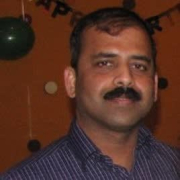

MuleSoft Anypoint Platform and SAP Cloud Platform are prominent contenders in the integration solutions market. MuleSoft Anypoint Platform tends to have an edge due to its comprehensive API management and vast connector library.
Features: MuleSoft offers comprehensive API management and integration with CRMs like Salesforce, batch processing, and its proprietary DataWeave Language for data transformation. It simplifies integrations with visual configuration, supports over 200 connectors, and ensures robust performance via features such as High Availability. SAP Cloud Platform is strong in ERP integration, integrates seamlessly with other SAP products, and is noted for robust roles-based security features. It offers scalability and customization with AI-based microservices for enhanced functionality.
Room for Improvement: MuleSoft could improve its runtime management system and pricing model while enriching B2B integration and AI features. The need for better documentation and support is also noted. SAP Cloud Platform lacks in third-party application integration and has a complex pricing structure hindering visibility. It also requires more intuitive interfaces and faces challenges with licensing and deployment speed.
Ease of Deployment and Customer Service: MuleSoft provides flexible deployment options including public, private, and hybrid environments, also supporting on-premises setups. Customer service experiences vary, with some users praising their support and others reporting delays. SAP Cloud Platform typically supports public cloud deployments but offers private options too. Their customer service is often involved and responsive, providing regular follow-ups.
Pricing and ROI: MuleSoft's pricing is seen as high but justifiable due to its functionality and support, making it suited for large enterprises rather than small businesses. Its ROI is significant in enterprise contexts due to code reusability and system streamlining. SAP Cloud Platform also has a complex, expensive pricing framework tied to user numbers and bandwidth but provides substantial returns in large-scale ERP integrations, especially in legacy modernization contexts.
Top management buy-in is crucial, and conducting an ROI analysis is essential before adoption to ensure the investment aligns with value.
In the last three to four years, whatever we have invested, we have received two to three times back from our investment.
Orders are managed online, integrated with S/4HANA, reducing chances of fraud or communication errors in processes like purchase orders and sales.
The Salesforce team offers different levels of support.
The support team is responsive and helpful.
I rate the technical support as ten out of ten because there is often a need for continuous technical support.
The availability of knowledgeable support to the implementation partners and the customers could be better.
Regarding support, whenever we are creating a ticket for any problem, we want the solution immediately at the earliest.
MuleSoft Anypoint Platform is quite scalable, and it meets our use cases with no issues preventing implementation.
MuleSoft provides the ability to scale, yet it is costly to do so.
SAP Cloud Platform is most suitable for various business needs, allowing easy expansion.
On a scale of one to ten, I'd rate its scalability at nine and a half to ten.
If the databases are accurately managed, the solutions and processes are performed quickly and efficiently.
Earlier, we had individual applications, but now everything is migrated to SAP, and it's all on a single platform, making it easier for management to make timely decisions.
SAP Cloud Platform is pretty stable, although there are occasional rare glitches.
Currently, it uses other standards, but adopting OpenAPI, the standard in the market, would be beneficial.
When dealing with multiple transactions or trading, the system can lose control, and tracking becomes hectic.
MuleSoft is considered expensive, so pricing is a major concern.
SAP Cloud Platform should improve on integrating third-party applications with S/4HANA.
In 2024, we will have migrated to S/4HANA through RISE with SAP.
Allowing more third-party applications to be integrated into the cloud platform would make it easier for customers to adopt SAP Cloud Platform.
I do not know the specific costs, but given that it is part of MuleSoft, I suspect it is not cheap.
MuleSoft is considered one of the more expensive products in the market.
The platform reduces manual workload in maintaining infrastructure, but it does come with some cost considerations.
The cost for SAP Cloud Platform is high as the server is expensive.
When compared with other organizations or software companies, it should be minimal or a little bit more, but there is too much of a gap between other software companies and SAP.
SAP is competitive compared to other enterprise solutions like Oracle, though not necessarily cheap.
The most valuable feature is the full lifecycle management, including Anypoint Designer and Exchange, as well as Discofolio API.
MuleSoft Anypoint Platform helps to standardize data integration approaches, making it easier to implement integration projects.
The platform is integrated with Salesforce, making it preferable when using Salesforce products.
The main benefits of the SAP Cloud Platform for us are that earlier we had the primary data center at our place, but now we have shifted to the cloud.
It converts CapEx into OPEX due to its SaaS model.
The most proficient feature of SAP Cloud Platform is integration for data services linked with Fiori apps.
| Product | Market Share (%) |
|---|---|
| MuleSoft Anypoint Platform | 10.4% |
| SAP Cloud Platform | 6.1% |
| Other | 83.5% |


| Company Size | Count |
|---|---|
| Small Business | 21 |
| Midsize Enterprise | 12 |
| Large Enterprise | 29 |
| Company Size | Count |
|---|---|
| Small Business | 15 |
| Midsize Enterprise | 7 |
| Large Enterprise | 25 |
MuleSoft Anypoint Platform provides API management and integration capabilities with scalability, ensuring seamless connectivity across systems.
MuleSoft Anypoint Platform offers API management and integration capabilities within a user-friendly interface. With a range of connectors and the ability to handle integration patterns, it enables data integration across environments with support for API-led connectivity. High scalability, observability, batch processing, and tooling are key features, enhancing performance while simplifying deployment.
What are the standout features of MuleSoft Anypoint Platform?MuleSoft Anypoint Platform is employed by organizations for API management and seamless integration across systems in industries like retail and e-commerce. It connects enterprise applications in environments such as SAP and Salesforce. Users leverage it for data transformation and synchronization, achieving efficient real-time processing and a middleware layer across systems.
SAP Cloud Platform is an integration platform as a service (iPaaS) and PaaS cloud tool. It powers applications that deliver real-time insights to contribute to more effective and timely decision-making. Customers all over the world from different-sized companies use SAP Cloud Platform to build application extensions, integrate landscapes, or extend existing enterprise applications in the cloud.
The platform incorporates innovative technologies, including big data, Internet of Things (IoT), artificial intelligence (AI), and machine learning (ML). SAP Cloud Platform supports native services and products by SAP, as well as partners with popular platforms such as Microsoft Azure, Google Cloud Platform, Amazon AWS, and Alibaba Cloud.
Users of the product can extend, integrate, and develop applications on premises and in the cloud. The product offers flexibility, agility, and scalability, as it enables easy integration and connection of different applications within the platform. The solution is based on open standards and provides a wide range of development tools.
SAP has announced that they are removing SAP Cloud Platform as a brand name and moving its capabilities within SAP Business Technology Platform (SAP BTP). The features of SAP Cloud Platform will be integrated into SAP BTP to assist with data management and analytics, alongside other components of the platform. Existing customers of SAP Cloud Platform will continue to benefit from its products under SAP Integration Suite and SAP Extension Suite.
SAP Cloud Platform Capabilities
The solution offers a wide variety of tools, application capabilities, services, and application programming interface (API). These can be categorized in the following ways:
SAP Cloud Platform Benefits
The platform has many benefits which improve their client’s workflows. They include the following:
Reviews from Real Users
Shylaraj AK, a senior architect at a construction company, describes SAP Cloud Platform as easy to maintain, great features, and helpful support, which attributes to his high rating for the product.
Ehab-El H., chief executive officer at Asis, likes SAP Cloud Platform because it is easy to use with a fast deployment and straightforward setup.
We monitor all Integration Platform as a Service (iPaaS) reviews to prevent fraudulent reviews and keep review quality high. We do not post reviews by company employees or direct competitors. We validate each review for authenticity via cross-reference with LinkedIn, and personal follow-up with the reviewer when necessary.